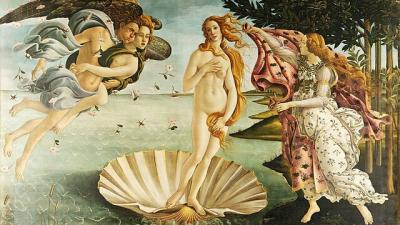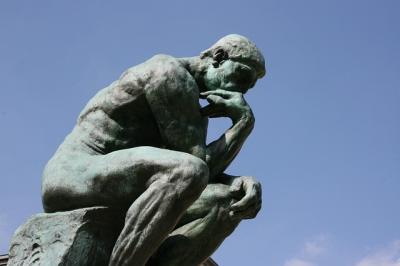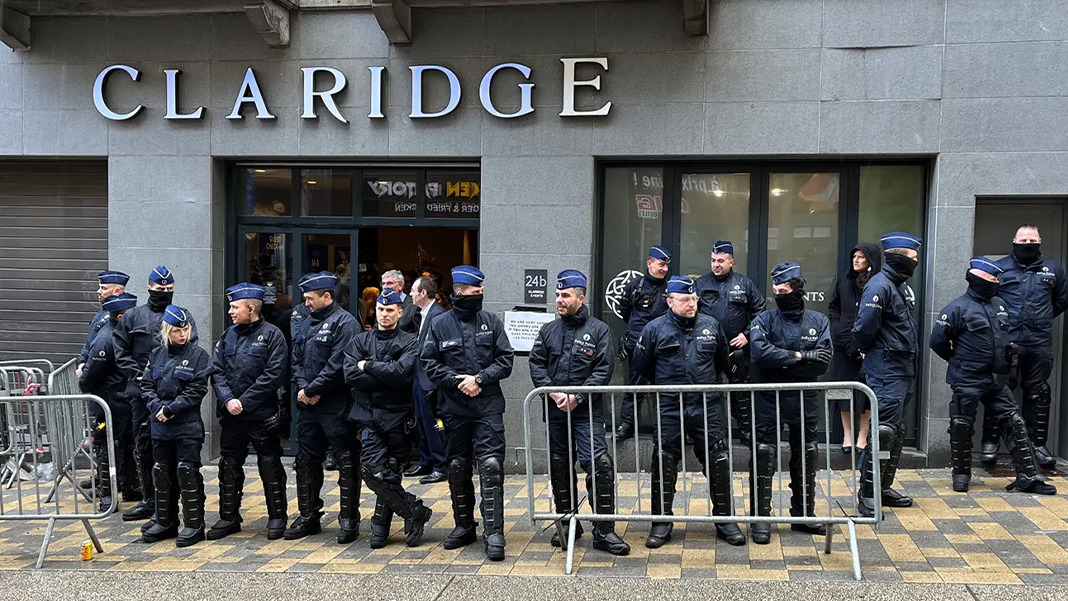The few who listen to us deserve beauty
but also the truth
that is – horror
that they may be brave
when the time comes
Zbigniew Herbert, Widokówka od Adama Zagajewskiego (fragm.)[1]
The fight against Western civilization is being waged on multiple fronts, encompassing the vast domain of culture. The reason behind the frequent questioning, derision, and mockery of culture and art of old times is intrinsically linked to a query: what is the significance of beauty?
The Difficult Notion of Beauty
The Western civilization has witnessed a continuous evolution in the understanding and definition of beauty and art. Throughout centuries, there has been a quest to unravel their true essence and delve into their significance. However, starting from the 18th century, there have been endeavours to dismantle and reject not just the notions of beauty and art, but also the long-established traditions and philosophical frameworks associated with them.
Beauty, rooted in the ancient concept of kalon (meaning beautiful, good, or noble, yet somehow it transcends any one of those concepts), has undergone a transformation from being universally admired to becoming a matter of subjective taste. Critical opinions on beauty now reside solely in the eyes of the beholder, while society tends to dismiss it as a sentimental longing for a bygone era. To comprehend the reasons behind the standardized depreciation of beauty and its association with the liberal bias prevalent in the modern artworld, it becomes crucial to explore the true essence of beauty and ask why contemporary modernism appears to fear it.
The inquiry into the concept of beauty may appear insignificant, yet prevailing conversations suggest that modern evaluations of beauty primarily focus on its superficial aspects. Conventionally, beauty is perceived as a visual attribute, an appealing facade, or a delightful scene that offers pleasurable visual encounters. This understanding of beauty entices, captivates, and stimulates. However, the issue lies in the fact that this perspective fails to fully encompass the vast potential of beauty that ought to be explored in the context of art and culture. Beauty is a concept that goes beyond mere cosmetics. By limiting our understanding of beauty to its surface value, we fail to appreciate its transformative power and its ability to shape our world, including ourselves.
Aesthetics cannot be simply reduced to cosmetics. Aesthetic beauty, whether regarded as philosophical, axiomatic, or Beauty with a capital B, holds cognitive, parenetic, and spiritual significance. It is important to acknowledge that beauty is not solely subjective, contrary to popular belief. The objectivity of beauty stems from the inherent nature of art and the world itself, as the world possesses its own inherent beauty that is not contingent upon human judgment or creation. Given that the value of beauty is not a result of human creation but rather a discovery, it becomes crucial to comprehend the fundamental nature of the artistic process based on these principles. It should be noted that humans do not originate art from nothingness, as the act of creatio ex nihilo is reserved solely for God. Instead, humans produce art using the resources available to them. As beauty resides within a realm beyond human creation, the instances where human genius and talent bring forth beauty are referred to as art. Or, at the very least, they used to be. The question remains, what led to the shift in modernist art, and to a great extent contemporary art, that resulted in the devaluation of beauty and its substitution with ugliness?
Beauty is an absolute value because it does not adapt to current times, but requires each individual to learn how to perceive and understand the manifestations of beauty. Experiencing art beyond the necessary level of sensitivity is a matter of developing taste and the ability to look consciously. This results from the axiomatic connection of Beauty with the values of Truth and Goodness. And in this field, the mechanism of the need to contemplate beauty becomes visible. How can we explain the rather peculiar phenomenon of viewing works of art and experiencing intellectual pleasure through them? How to explain pilgrimages of individuals to specific museums and works of art, sometimes spanning continents, just to stand with their own eyes in relation to a work of art? Beauty not only has an incredible power of attraction, but in this dialogue – the relationship between the work of art and the recipient – it allows us to contemplate the untold truths about the world and ourselves.
Humans have an innate desire for beauty as it fulfils their need for values, which is crucial for personal growth. This connection between human needs and their development is evident in the role of art throughout history. However, contemporary art theorists and practitioners struggle to define the concept of art, acknowledging that a work of art is recognized as such within the enigmatic artworld without any further criteria, which hinders the understanding of true functions of art. One such function is the social or parenetic function, which stems from art's inseparable link with society. By distorting the workshop medium – iconography & iconology, meaning narrative of the art work – and neglecting the aesthetics that connect art with its audience, the parenetic function of art is being questioned. As a result, both art and its audience are denied the opportunity to engage with reflective substance. This transforms the artwork into a mere source of visual pleasure or a means to convey its content solely through promotional materials and the opinions of experts following prevailing political trends.
It is because art serves the purpose of human growth, throughout history, the pursuit of enduring art that transcends the ever-changing trends of the avant-garde has been centred around the concept of beauty. In this sense, beauty serves a purpose and holds distinct functions, hence the art that unveils this beauty possesses functions that can be observed within the personal and societal realms of artistic engagement. Therefore, it is pertinent to question whether this understanding of beauty solely serves our interests or if it is, in fact, indispensable. Is beauty merely a luxury for the privileged few, a wasteful expenditure of time and money? Or is it, in fact, a fundamental necessity that signifies a deeper meaning?
The Worship of Ugliness, Consumerism and Nihilism
The issue with modern society lies in rejecting absolute values and embracing utilitarianism, pleasure, and consumerism instead. This leads to a culture deeply rooted in materialism and moral relativism. Relativism hampers rational exploration of the meaning, purpose, and origins of our reality, as well as inquiries about the essence of humanity. Consequently, individuals are trapped in pessimism and nihilism, which promote moral permissiveness.
What about art, which exists beyond practicality and instead thrives in the domain of aesthetics? Art has also undergone alterations to align with the prevailing status quo, avoiding any opposition. Some theorists refer to contemporary art as pseudo-art or anti-art, claiming that true art never fades away. This pseudo-art has primarily centred around the artistic arrogance of individuals' egocentrism, ultimately leading to creative infantilism. This so-called "art" has transformed into something ugly, as it has detached itself from beauty and the artistic craftsmanship that accompanies it. Consequently, it has become a mere production domain, devoid of contemplation on the meaning, purpose, and human condition in relation to greater entities.
In what way has the transformation in the field of art occurred and is still taking place? Initially, there was a widespread deconstruction of the significance of artworks, suggesting that while they possess representational and expressive functions, they do not convey any definite meaning beyond their visual appearance. Furthermore, their expression primarily relies on evoking emotions. Consequently, artworks lost their meaning as conveyors of information and ideas, as well as their moral and aesthetic context. This reduction led to a decline in profound analyses, promoting anti-scientific relativism. This phenomenon is evident in visual art spaces, with the imposition of empty curatorial narratives in galleries, as well as in the realm of literature. However, this trend has had a significant impact on the academic humanities, where the pursuit of beauty and meaning through rational inquiry became a forbidden subject.
Few individuals question the cause and significance of the current crisis faced by the humanities. In today's era of globalization and technocratization, the majority of society perceives the humanities as remnants of a distant past. However, it is the humanities that delve into the fundamental aspects of our existence. They inquire about humanity, its experiences, values, origins, trajectory, development, and vulnerabilities. The modern-day culture wars, the assault on Western civilization, the crisis within humanity, and the uncertainty surrounding the purpose of art are all interconnected with the crisis afflicting the humanities.
In the past, the field of art studies within the humanities aimed to conduct contextual research on the final products of civilization and the prevailing norms. This involved separating historical information about the creation of artworks and the artistic techniques used from the information available to artists' contemporary audience through the language of art (iconography and iconology) and the universal disinterested message conveyed by the artwork. However, this approach has changed over the past century. Now, there is a shift towards searching for the intentional message of the artist and exploring so called objective interpretations that are detached from the creator. This has led to the recognition of extreme relativism and the limited power of the humanities in interpreting and analysing artworks. Consequently, historical works are now open to various interpretations influenced by contemporary ideologies and political trends.
The principles of visual arrangement, rooted in humanity's inherent desire for harmony, have been superseded by disarray and disorder. As a result, the institutionalized art world imposes the notion that individuals' preferences are unsuitable and uncultured, discouraging them from exploring the realm of art.
The emphasis on conceptualism and individual expression in art education has diminished the importance of honing artistic craftsmanship, thereby restricting the range of positive messages that can be conveyed through art. Consequently, it is not surprising that a considerable portion of artistic storytelling revolves around irony, sarcasm, cynicism, and nihilism.
The relationship between art and politics has always existed. However, it is only when art loses its purpose as a medium for aesthetic values and universal meanings that it becomes solely a tool for political manipulation. In this scenario, an object is labelled as art based on its alignment with certain political agendas. This phenomenon is evident in the case of art's engagement with identity politics. When art no longer promotes the universal values that define a culture's identity, such as Western culture, it becomes entangled in specific political causes.
The possibility of such a situation could also result in the discontinuation of artistic expression and the infringement upon the right to freedom of speech. When art loses its authenticity and fails to convey meaningful values, critics and censors solely concentrate on the political implications of the artwork or the artist. Numerous instances of censorship and art cancellation, artist intimidation, gallery suppression, and even the destruction of artworks are prevalent in today's society. Art that no longer explores universal concepts and fails to address the significance of humanity within larger contexts becomes nothing more than a populist medium, conforming to the same rules of ideological communication as the press and television.
The absence of meaning and optimism in life leads to unsightliness and isolation, which are not only characteristics of art found in contemporary galleries, but also define the entire anti-aesthetic framework of the world we inhabit. It is important to take a moment for sincere introspection and ponder upon the appearance of our homes, our children's classrooms, and our workplaces. We should question the ideologies that shape the formless structures of our churches and the transparent city centres lacking privacy. How do emotionless residential areas and utilitarian apartment complexes affect us? Moreover, what impact do visually mundane cars, roadside advertisements, and pragmatic clothing have on our perception? How do the visual elements in media, social media, phone software, and the programs we use appear? Do any of these domains align with the aesthetic and stylistic ideals of previous centuries? At what point did we inadvertently, as I don't believe there was a unanimous agreement, choose to distance ourselves from the beauty of our surroundings and the inspiration we should derive from our interactions with them?
The prominent representation of the described trends is evident in the unattractive architecture that surrounds us. The impact of tasteless architecture on our daily lives becomes evident when we consider our choice of travel destinations. We are drawn to places like Renaissance Florence, Baroque Rome, medieval Cracow, museum-filled Vienna, and vibrant Barcelona. These locations evoke a sense of harmony, order, and imagination. However, we don't experience the same sensations in shopping malls, modern city centres, or neighbourhood walks. The stark contrast highlights how the presence of uninspiring architecture can hinder our overall well-being and enjoyment of our surroundings.
This juxtaposition against ecological efforts is a disheartening irony. We continue to construct new buildings that not only mar the aesthetics of our environment but are also quickly replaced or left abandoned within a short span of time. This approach clearly disregards the principles of environmentalism, as the emissions from construction and the lack of durability in contemporary architectural styles fail to produce structures that can withstand the test of time.
The collision of shockvertising and minimalist attempts to eliminate detail has shaped the artistic reality around us. It is certain that marketing shockvertising, which effectively exploits the pervasive eroticization of messages nowadays, will eventually become mundane, much like other trends such as brutalism, remodernism, and minimalism. Just as art that solely concentrates on the challenges of its era, encapsulated within a specific time and place, and lacks a profound universal message, eventually fades away. At some point, someone will inevitably raise their voice, proclaiming that the emperor has no clothes. This declaration certainly will trigger crowd psychology and the implementation of social ostracism towards the individual.
The more significant issue at hand is that the concept of ugliness has transcended its boundaries and now encompasses not just contemporary artists, but also those from past centuries. This endeavour to exert control over the present, the past, and consequently, the future, prompts us to question the intention behind these actions. Furthermore, one must consider whether the diminishing originality of beautiful art and the consequent loss of its value is not only an external loss of beauty, but also an internal loss of beauty.
G.K. Chesterton once said that medieval individuals never concerned themselves with being medieval, whereas modern individuals are excessively concerned with being modern. In today's world, we find ourselves in a paradox. Despite having unparalleled access to knowledge, we fail to prioritize reliability and demand the same from the realms of art, culture, and their underlying values. Our rage to be moder takes precedence over all else, reflecting that it is the intelligentsia, rather than the masses, who are most susceptible to the allure of contemporary trends. This phenomenon ultimately points back to the importance of education and its influence on society.
Transcendental Beauty and Education
Beauty is the force that intertwines art and culture with the profound questions and challenges that define the course of human civilization. It serves as a powerful counterbalance to ugliness and uncertainty, offering solace in times of despair and discord. Beauty possesses the rare ability to inspire individuals to achieve greatness, illuminate the path to truth, and ultimately conquer the prevailing nihilism and relativism that permeate both society and the individual. It does so because Beauty is one in being with the Good and the True.
Nowadays, there is a concern that axioms, similar to the concept of God, are being questioned and debated. It is important to note that there is no void or vacuum effect in our world. Contrary to the belief that we are progressing by abandoning old superstitions in the realm of values, the reality is that many individuals who challenge universal and axiomatic values simply substitute them with their own beliefs. However, these replacements are often limited, temporary, and ultimately destined to fail, as no one has yet devised a universally applicable value.
The significance of beauty in society and its paradoxical marginalization in the modern world is closely tied to its role in education. Beauty holds a unique position as it inexplicably triggers rational understanding, enabling us to analyse our surroundings and form self-assessments. This perspective, shaped by the experience of beauty, allows us to perceive other values and comprehend the true fabric of our world. Understanding why beauty is both socially important and undervalued lies in its ability to guide our perception and self-reflection through education.
In one of his writings, Zbigniew Herbert expressed his belief in the existence of beauty and ugliness, good and bad, nobility and meanness, and he warned against blurring these boundaries in the name of anything. Beauty serves as a guidepost, revealing the truth about humanity, their worldview, and moral evaluation of their actions and character. By stripping away superficial hypocrisy, beauty reinforces the essence of humanity, existing between the lowliness of mud and the ethereal nature of clouds.
Hence, beauty becomes a source of distress within the framework of global division and the collapse of traditional values. The expression of beauty, as exemplified by the flawless craftsmanship of Old Masters’ art rooted in established principles, starkly diverges from modern creations. This is precisely why humans crave art. Whether our aim is personal growth, as Aristotle envisioned with eudaimonia, or the pursuit of holiness through Catholic teachings, encountering the sublime and divine beauty prompts us to strive for self-improvement beyond our current state. Dostoevsky's renowned quote emphasizes the power of beauty in saving the world. This concept holds true in Catholic doctrine, where beauty serves as a means to express the idea that God will be the saviour of the world. Additionally, in the realm of general ethics, beauty plays a crucial role by providing the necessary foundation for moral values and guiding human actions. Without these axiomatic values, there would be a lack of support for the morality and behaviour of individuals.
In today's education system, particularly in response to the challenges faced by academic institutions, there is a renewed focus on the purpose and significance of education. At the heart of this issue lies the question of beauty, as beauty, with its inherent connection to truth, paves the way to wisdom. In the past, the primary objective of education was not simply the accumulation of knowledge or practical skills, but the attainment of wisdom by students. Education aimed to explore the profound questions of life's purpose and direction, seeking wisdom as its ultimate goal.
The modern education system prioritizes teaching students critical thinking skills while neglecting to teach them logical argumentation. As a result, students lack the necessary methodological skills to independently seek the truth. The curriculum focuses on practical skills relevant to the technocratic and global reality of the 21st century, as well as social sciences, emotional intelligence, and creative development. However, it fails to address the holistic development of an individual's humanity, thus hindering the progress of civilization. This inherent flaw in educational methodology, particularly in relation to beauty and art, was identified by C.S. Lewis in the 1940s. Lewis observed that students were being taught that any value-related statements were merely reflections of the speaker's emotions and that all statements were inconsequential.
The departure from traditional workshops and aesthetics of the past has not only changed the way art and culture are expressed, but it also signifies an emotional decline that silently robs future generations of a vital aspect of human heritage, even before they can fully comprehend it. This blurring of cultural understanding has two significant consequences. Firstly, it disconnects mankind from the continuous knowledge that explores the meaning of human existence. Secondly, it poses a challenge in terms of the educational and creative path that future generations will choose. If Western society has long regarded humans as the imago Dei and instilled this belief in its upbringing, what is the current position of humanity in the hierarchy of existence? How art and culture have influenced civilization in the past and what kind of civilization we are creating in light of the impact of contemporary art and culture is the subject matter discussed by Lewis. The question finds its answer in the writings of Aristotle and St. Augustine. Aristotle recognized that education aims to shape one's preferences in accordance with moral standards, which is also the purpose of art and culture. However, it is only when this purpose aligns with universal and transcendent values that we can truly consider it successful education, where every object is loved appropriately based on an ordered hierarchy of affections (St. Augustine: ordo amoris).
Beauty, in this context, has the potential to rescue the world from the abolition of humanity. This is because beauty beckons us towards a greater existence and compels us to aspire to transcendental principles such as Goodness, Justice, Love, and Truth. These principles, in turn, inspire virtuous actions. However, we must reflect on the historical impact of art on education and the disregard for fundamental truths in the advancement of civilization. This prompts us to question whether we can dismiss the importance of values and aesthetics as mere outdated decorum, lacking true substance. Are we truly going to begin pruning the branches of the tree on which we are currently seated?
[1] Translation by the author.
This article was originally published in the report Lost Beauty. The Aesthetic Condition of Europe by Fundacja Twórców dla Rzeczypospolitej. Available online: Lost Beauty. The Aesthetic Condition of Europe. | New Direction
Read also
Culture Wars 2.0
SarsCov-2 is not the only pandemic that has spread around the world in the past year. The culture wars players who have been shuffling and drawing cards for the past five years lived to see the ideal conditions for a new hand; when the out-of-touch president of the world's most powerful superpower began seeking re-election in a reality paralyzed by a global pandemic, the culture wars entered a new phase of play.














Comments (0)